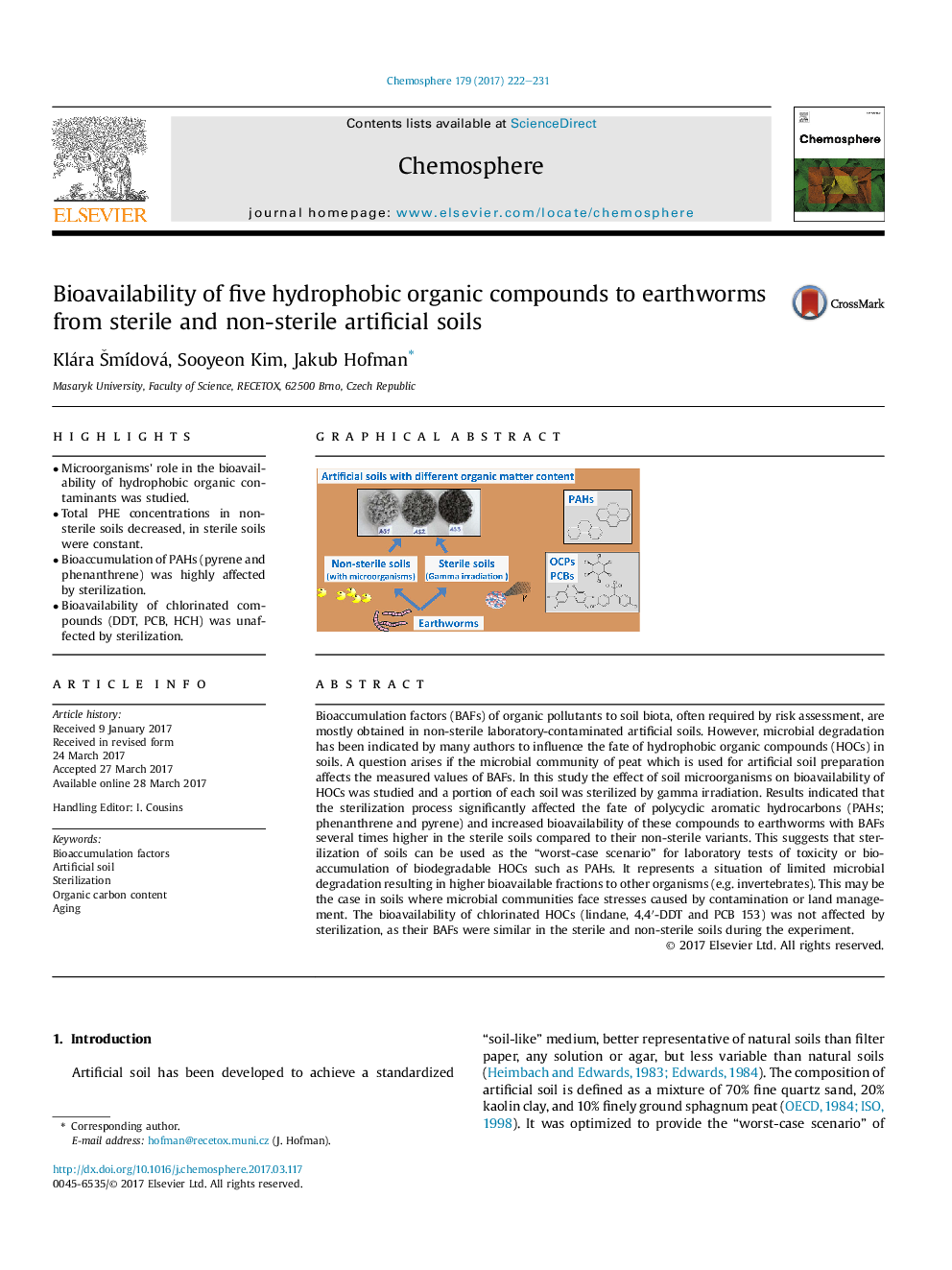| کد مقاله | کد نشریه | سال انتشار | مقاله انگلیسی | نسخه تمام متن |
|---|---|---|---|---|
| 5746542 | 1618792 | 2017 | 10 صفحه PDF | دانلود رایگان |
- Microorganisms' role in the bioavailability of hydrophobic organic contaminants was studied.
- Total PHE concentrations in non-sterile soils decreased, in sterile soils were constant.
- Bioaccumulation of PAHs (pyrene and phenanthrene) was highly affected by sterilization.
- Bioavailability of chlorinated compounds (DDT, PCB, HCH) was unaffected by sterilization.
Bioaccumulation factors (BAFs) of organic pollutants to soil biota, often required by risk assessment, are mostly obtained in non-sterile laboratory-contaminated artificial soils. However, microbial degradation has been indicated by many authors to influence the fate of hydrophobic organic compounds (HOCs) in soils. A question arises if the microbial community of peat which is used for artificial soil preparation affects the measured values of BAFs. In this study the effect of soil microorganisms on bioavailability of HOCs was studied and a portion of each soil was sterilized by gamma irradiation. Results indicated that the sterilization process significantly affected the fate of polycyclic aromatic hydrocarbons (PAHs; phenanthrene and pyrene) and increased bioavailability of these compounds to earthworms with BAFs several times higher in the sterile soils compared to their non-sterile variants. This suggests that sterilization of soils can be used as the “worst-case scenario” for laboratory tests of toxicity or bioaccumulation of biodegradable HOCs such as PAHs. It represents a situation of limited microbial degradation resulting in higher bioavailable fractions to other organisms (e.g. invertebrates). This may be the case in soils where microbial communities face stresses caused by contamination or land management. The bioavailability of chlorinated HOCs (lindane, 4,4â²-DDT and PCB 153) was not affected by sterilization, as their BAFs were similar in the sterile and non-sterile soils during the experiment.
324
Journal: Chemosphere - Volume 179, July 2017, Pages 222-231
